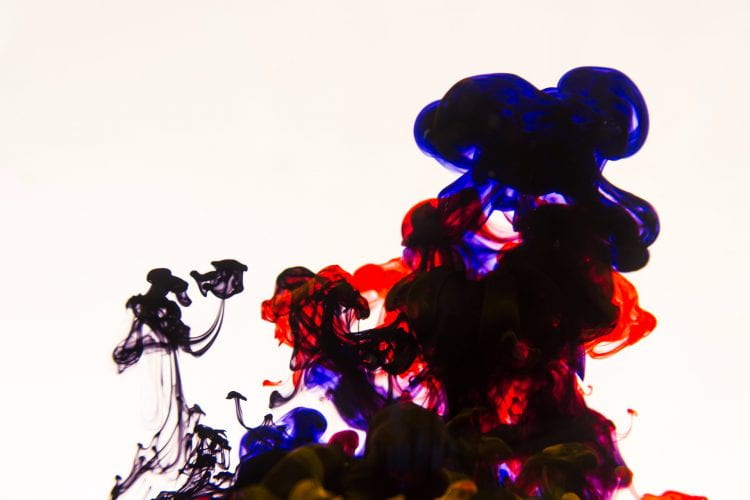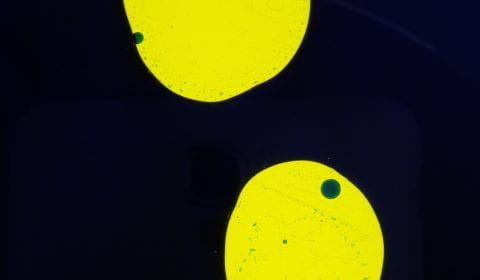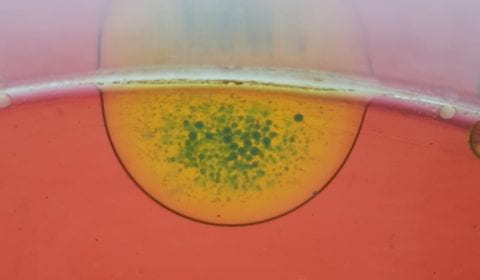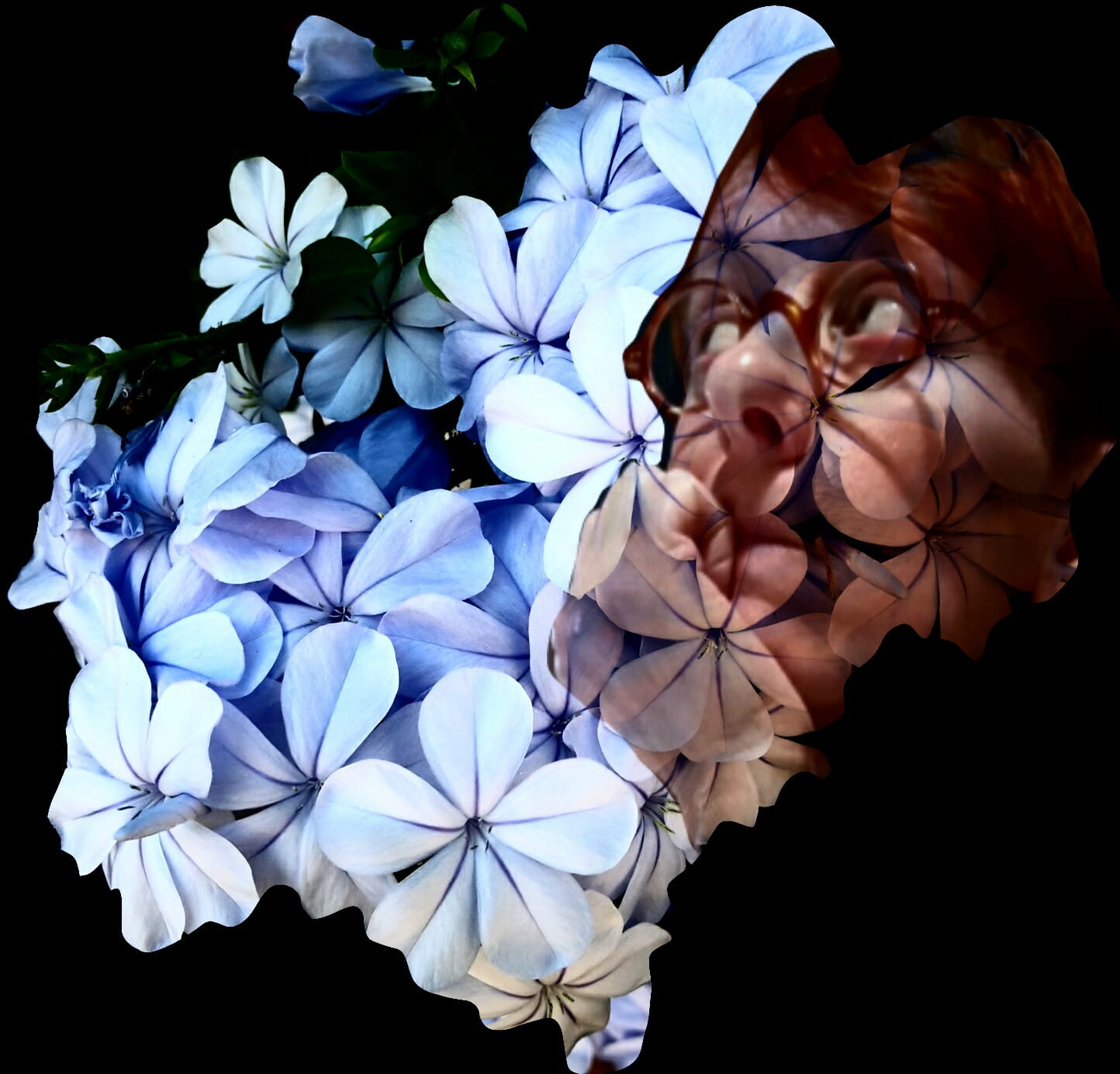 By Holly B.F. Warren (Atelierista and creator of the Think Tank)
By Holly B.F. Warren (Atelierista and creator of the Think Tank)
Introduction
This article illustrates the dialogues, mediums and outcomes of stain painting documented through photography, oral and written language. It was conducted by an Atelierista and an English teacher with the aid of an old smartphone, water and food colouring. The students guided the process with their inquisitive minds asking questions, proposing answers and creating vast scenarios of imaginative possibilities.
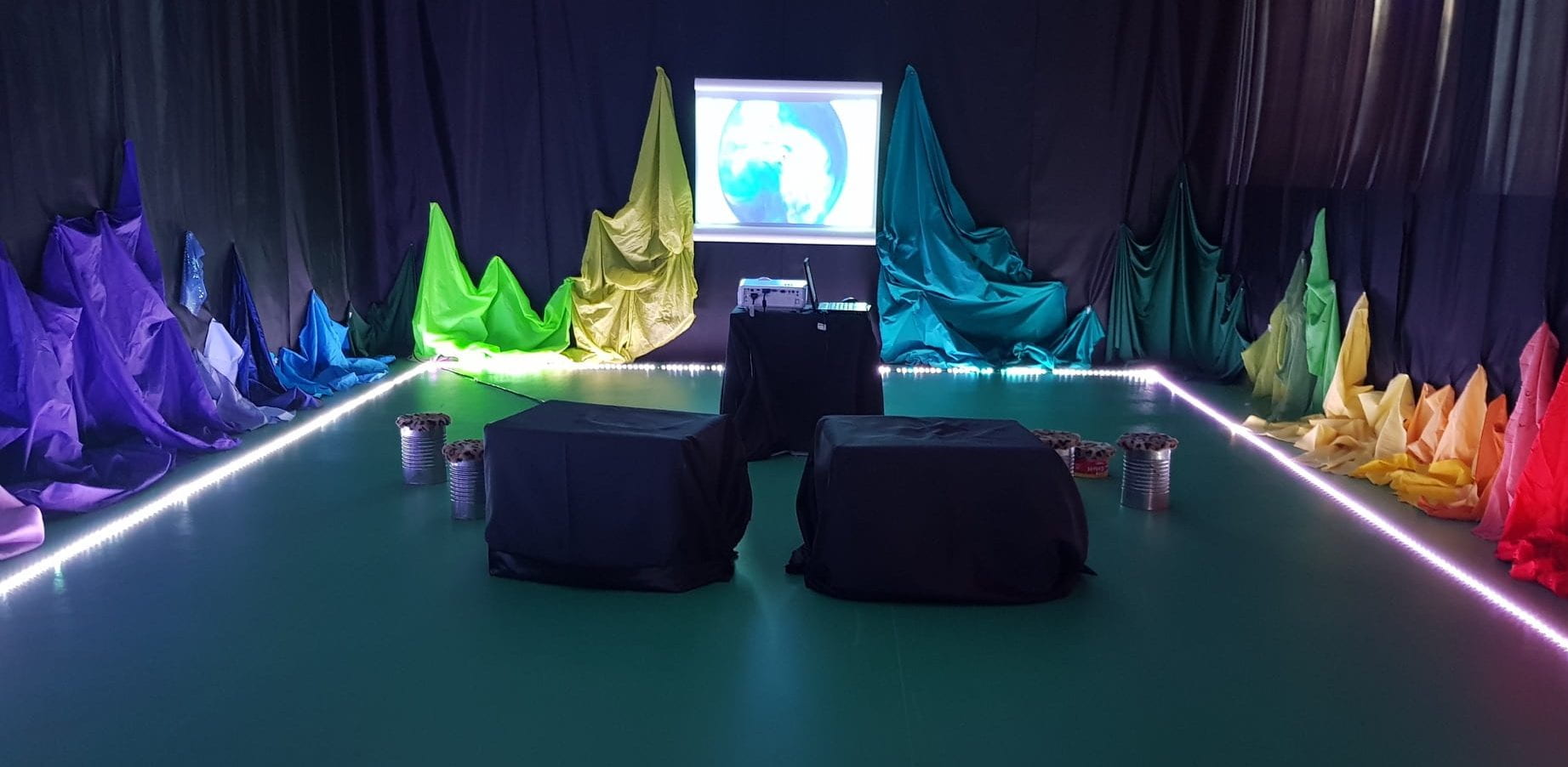
The experience took place in a learning environment that is inspired by educationalist and pedagogue Loris Malaguzzi where thoughts, ideas, concepts and theories stem from the interaction of children, adults and the environment in an open-ended journey of interaction and experimentation.
The figure of the atelierista is seen as the listener, the facilitator and the enhancer of the experience brought by the children. The atelierista reveals and illustrates the invisible connections that are obvious and tangible to the children, but not to the adult. In unison, the community creates processes that help illustrate the travelling narrative. A deep understanding of the child, along with experience in the arts, are essential in exposing the mentioned hidden stages and chapters of the journey. “As Margaret Boden (2004) states, “the exploratory creativity in children works around unconscious knowledge which is precepted but not explained.” Boden’s words come to life in the Think Tank Environment in the classical expression: “Can’t you see?”
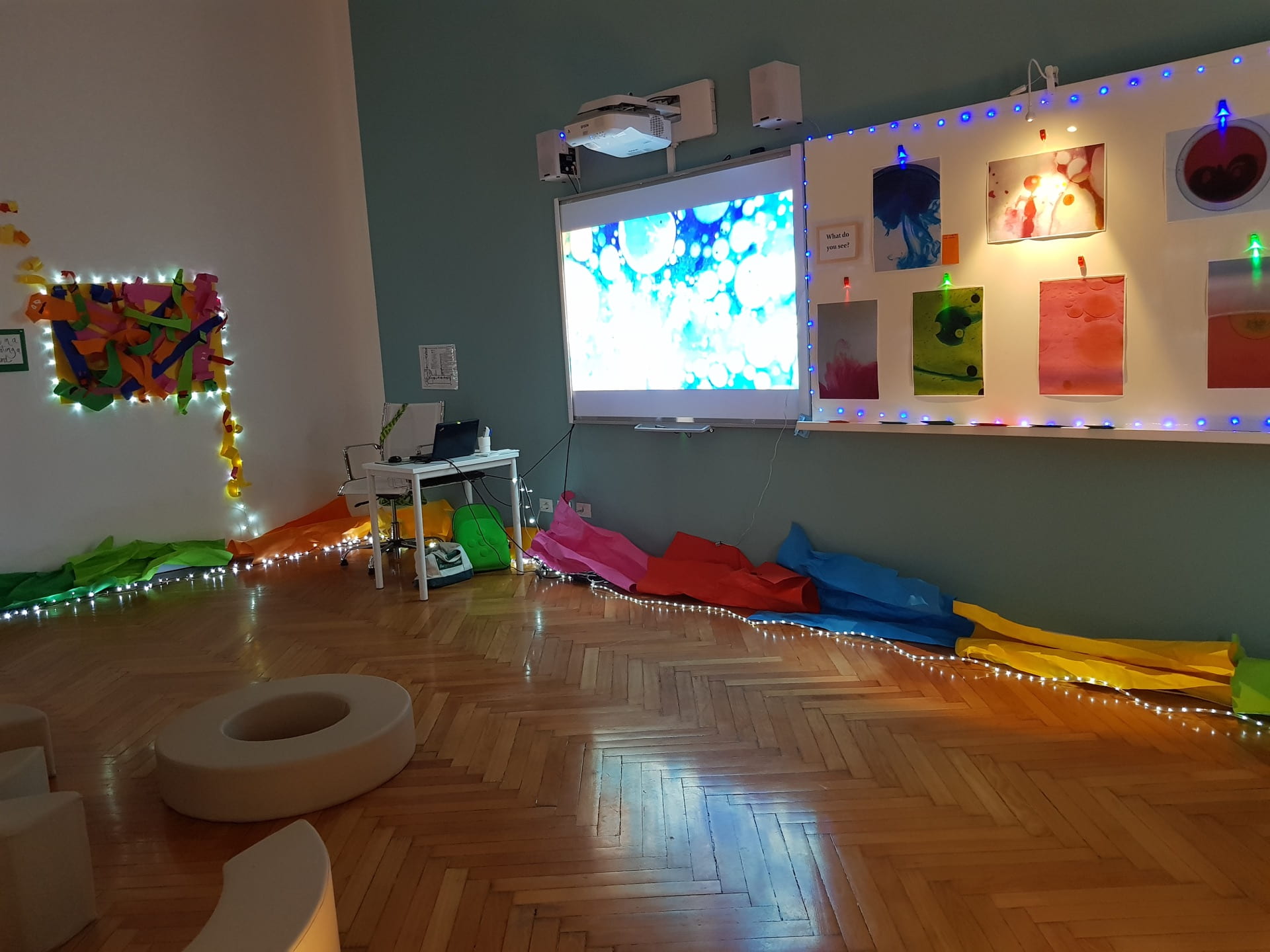
A video installation with recorded comments seemed to be the desired medium along with a soundtrack chosen by the children.
The collating ingredients were imagination and interaction amongst the participants. Let free to wander, imagination connects to unimaginable possibilities through the interaction with the social and physical environment. Eagleman and Brandt (2017) state that “creativity operates in the vastness of interdependency.”
The Think Tank Environment
The Think Tank (Warren, 2019) environment is a setting created to celebrate, stimulate, enhance and develop creativity through connections.
This environment celebrates imagination through the dialogues that are created between the students’ ideas, the atelierista, the exploration of materials available and the investigations that happen along the way.
It proposes and changes as the learning journey develops and evolves. It is a petri dish for new visions.
To read more about the Think Tank Environment, click here.
The Processes
The imaginative journey started with a bowl of water and food colouring in the primary colours. With the use of a pipette, drops of colour was added to water.
Colour is a strong component that permeates the décor and the materials available. When this experience started, coloured materials such as containers, pens, fabric and plastic items had been displayed in grading colours from hot to cold. This generated curiosity around the concept of colour. The strongest consideration was that colour gives reason and meaning to our environment. Colours don’t move, they just stay where they belong. The question of “Can colour move?” blossomed and seemed to be a tricky and challenging question.
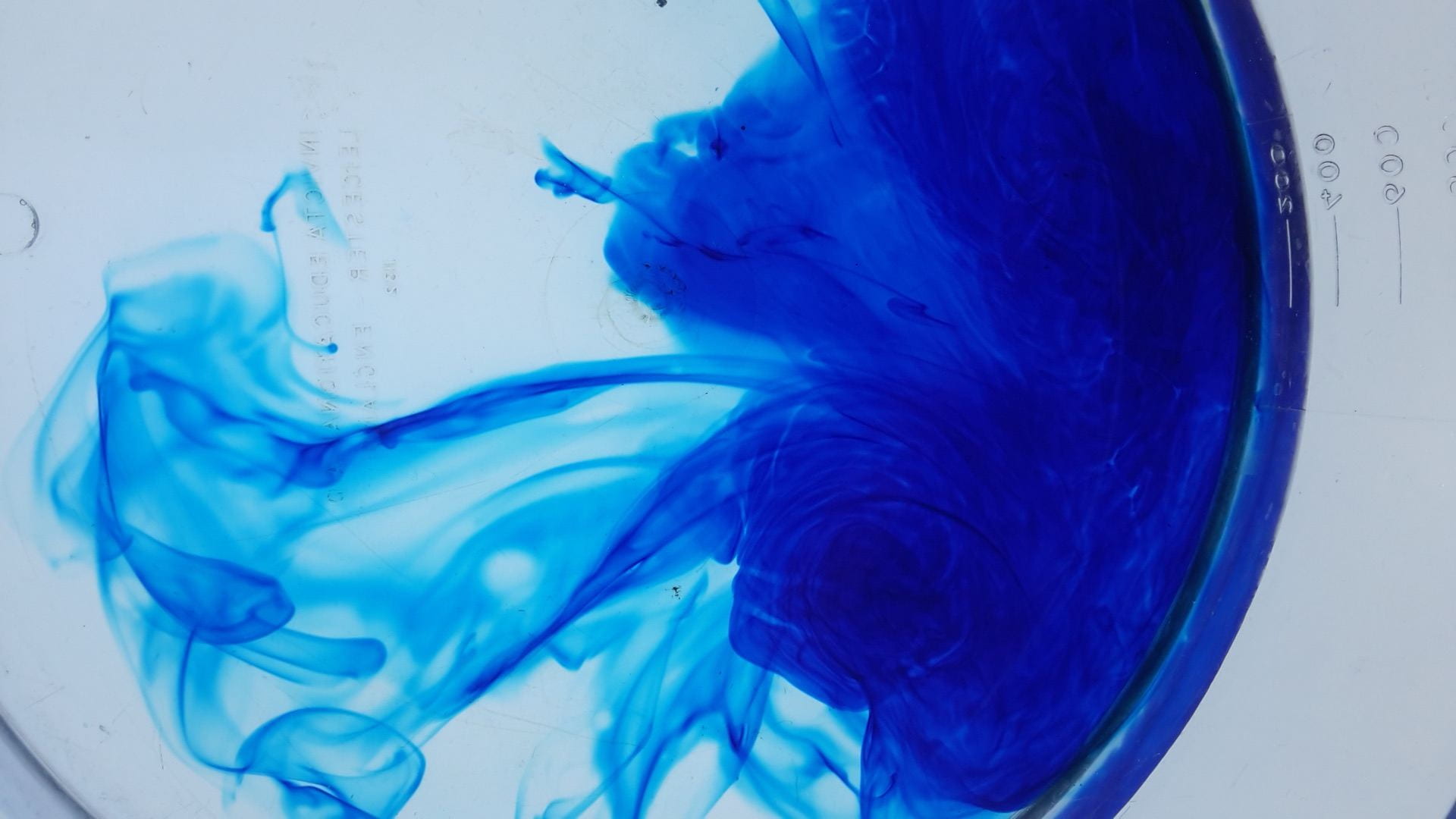
One colour, (food colouring) was chosen at a time. The children decided as a group, which colour to add first. In a second phase when the experiment had been tried a few times the students decided to add more substances such as oil, vinegar and salt. This was the result of a discussion based on the fact the food colouring is used in foodstuffs so moving along in this direction seemed ideal furthermore having a kitchen available made our wandering short distance.
Each group questioned, asserted and challenged this question. The idea of moving colour started to ignite the young minds but soon the assumption that it was the object that moved and not the colour created a flow of proposals that saw the light when water was involved. The year 2 students stated that water moves by itself and observing paint brushes when they are being washed set off the search for our raw materials: water and colour.
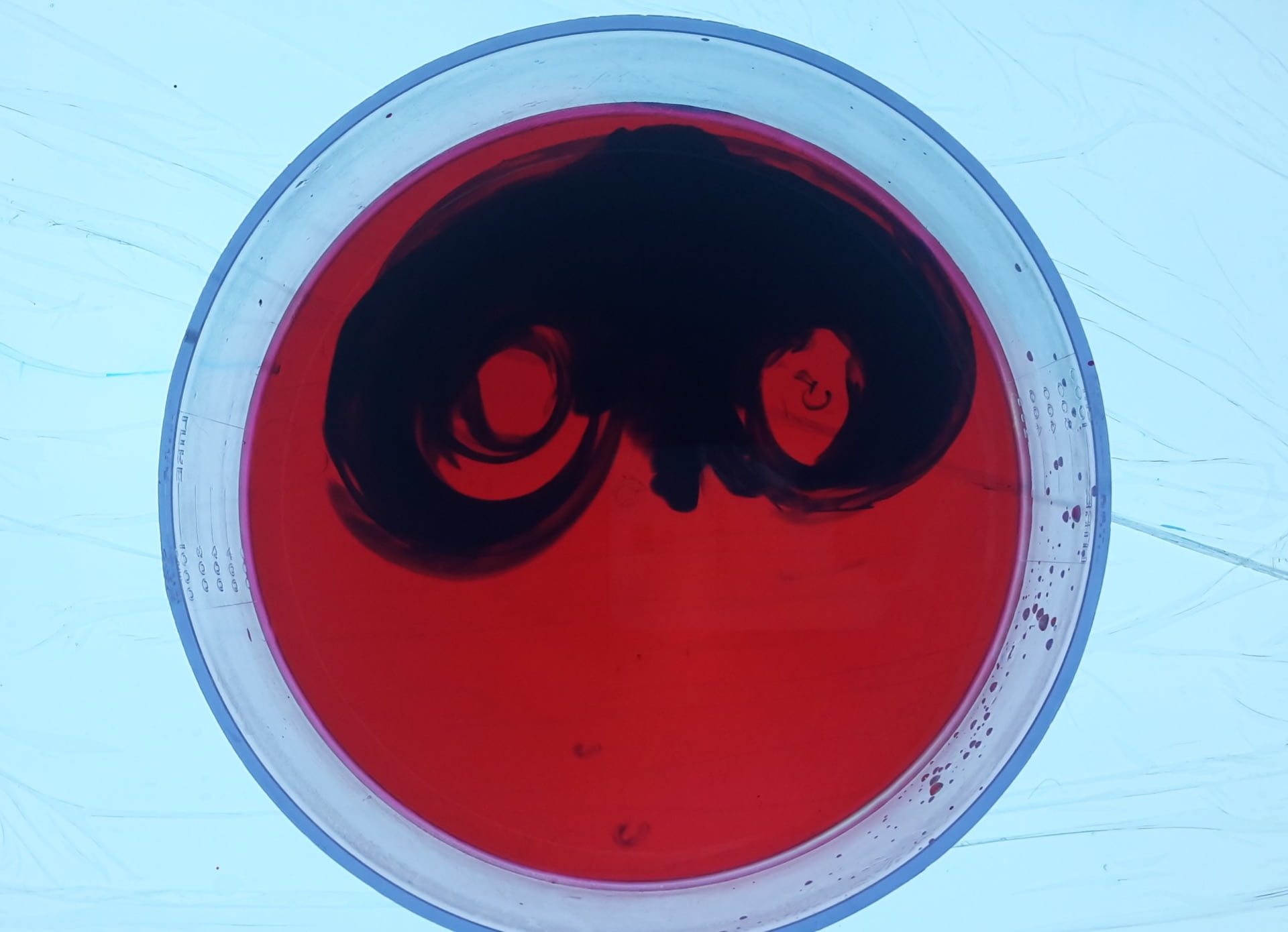
Digital photography was chosen to visually document the story. Children as young as 2 yrs. old used an old, but still perfectly functioning, smartphone/camera and took snapshots of the stages and development. It was the decided that a video installation would be the best way to narrate the everchanging shapes that colour acquired as it floated and danced around in water. “Let’s make it like at the cinema” stated a child, “We like to watch films and so does mum and dad.” Comments on the dynamic colour forms were recorded and added to the images.
The second chapter involved inviting older students and parents to contribute to the experience once it had been documented. Stripped from the exploratory phase they were nevertheless dumbstruck by the images and dialogues. The journey took the form of ripples, a particular feeling or effect that spreads through someone or something and moves in a way that is not obvious but noticeable (Cambridge Dictionary, 2019). Just like colour moved and morphed, so did the narratives created by the audience.
A drop of colour expanded and travelled across the water like the initial words that described the metaphor it wanted to explain. The first word rang in the minds of those around and set off an imaginative melody of similarities that lead to a story as colour changed shape. Young children spontaneously reached and stretched their inquisitive minds looking for possible solutions. This journey can be heard in the video as it unravels the student’s creative minds at work. Connections between reality and fantasy in a world made possible with some very simple and open-ended materials.
In the middle years the English department worked enthusiastically on the video installation created by the younger students and produced very effective creative writing. They created imaginative scenarios that invited the reader to step inside a parallel world of wonder.
A Y 9 student painted her experience with words:
It wasn’t a normal day; it looked like a new universe; it feels like a new world. The sky didn’t match the colour of the sea, but it matched the colour of blood that had permanently stained our society.
There were new clouds that didn’t seem to be fluffy anymore but instead, made of stone, the rain was always the same. It reminded me of life; it starts in the clouds, in the sky, and quickly it finishes as it hits the ground, dividing itself in many places.
Conclusion
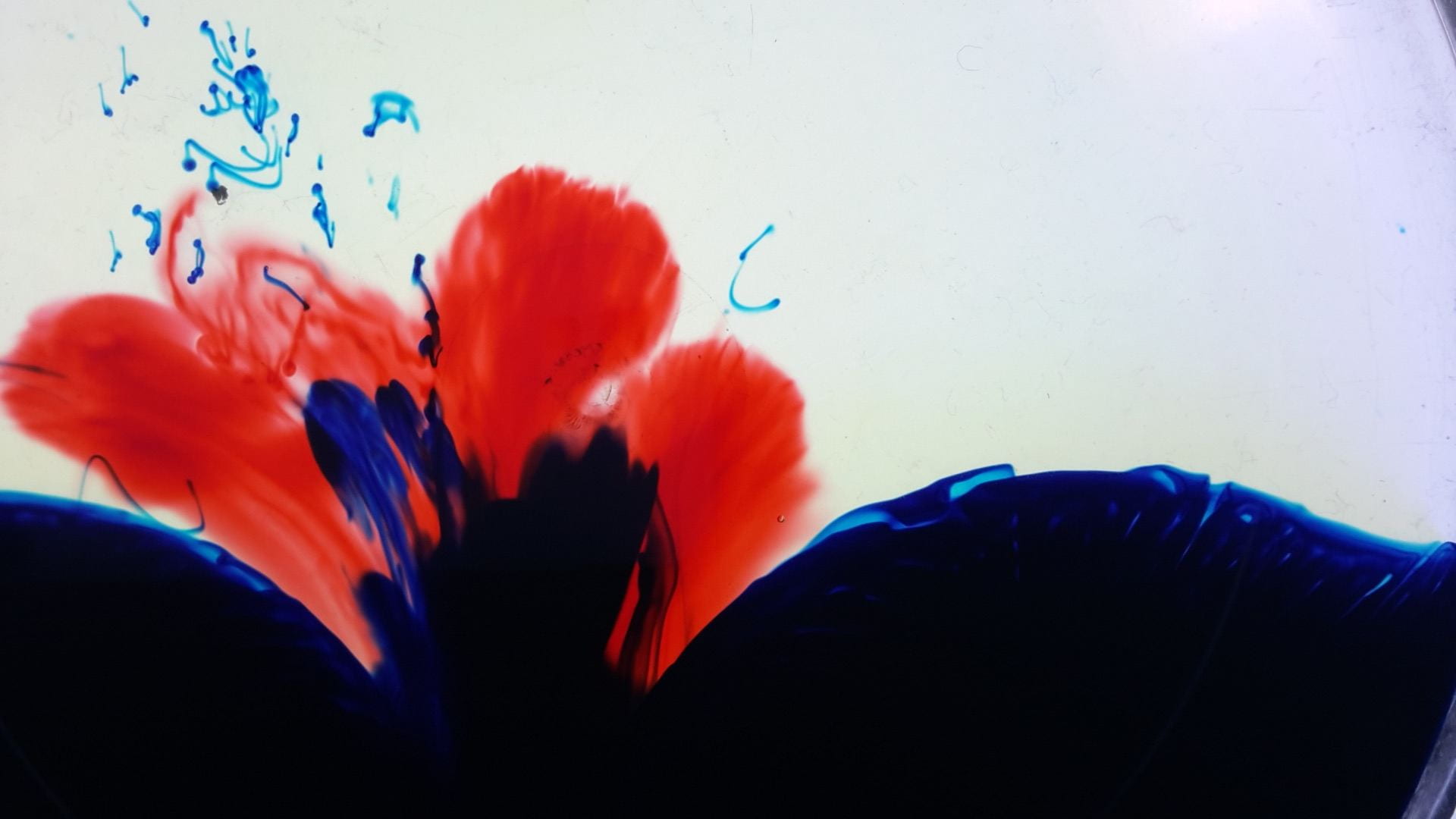
Imagination, as Kieran Egan (1997) states is the educational energy that preserves flexibility and new visions possible throughout our lives. Like a stone cast in water the experience created a series of ripples that expanded and touched those exposed to it. The photos ignited the imagination of the students who choose between the possible scenarios proposed by each individual and was passed along to others. Discussions unravelled possible stories of the unexpected and all assumptions were accepted. The narrative changed just like the movement of the two substances.
The adult audience composed of teachers and parents were in awe and found the pathway to a metaphor challenging but possible. Once they stepped inside the threshold of imagination and allowed their minds to wander a way was found, a smile unfolded and a feeling of well-being.
Video Installations
To see the exhibitions in actions, watch the videos below and hear the reactions from the students themselves!
Exhibition 1
Ripples. An Imaginative Journey. Part 1.When an atelierista and a group of young artists meet. from Holly B.F. Warren on Vimeo.
Exhibition 2
Ripples. An Imaginative Journey. Part 2. from Holly B.F. Warren on Vimeo.
Bibliography
Boden, M. A. (2004). The Creative Mind: Myths and Mechanisms. London, England: Psychology Press.Eagleman, D., & Brandt, A. (2017). The Runaway Species. Cannongate Books.
Egan, K. (1997). The Educated Mind. How cognitive Tools Shape Our Understanding. Chicago: The University Press.
RIPPLE | meaning in the Cambridge English Dictionary. (n.d.). In Cambridge Dictionary | English Dictionary, Translations & Thesaurus. Retrieved from http://dictionary.cambridge.org/dictionary/english/ripple
Interested in Reading More?
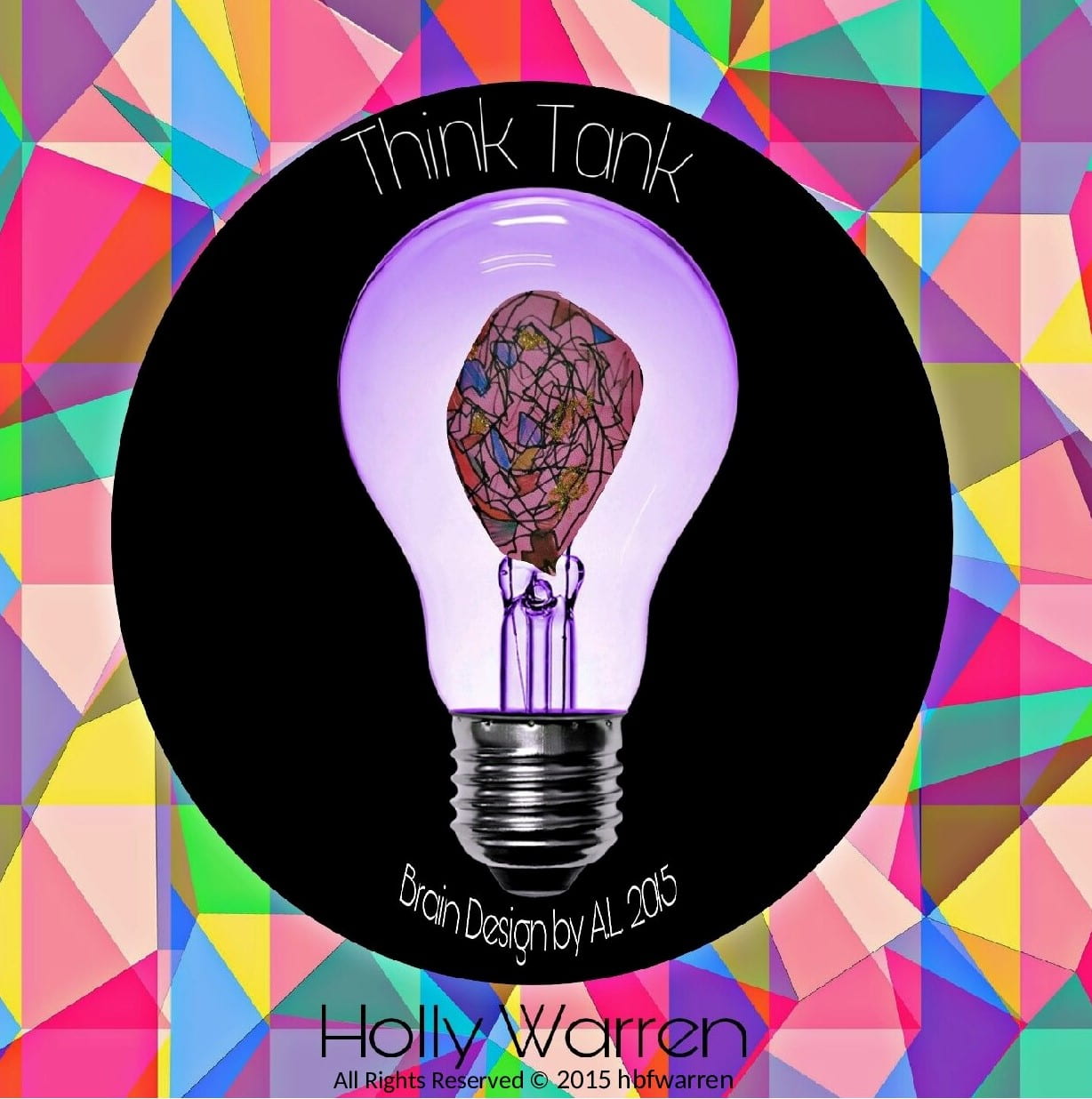 To read the full version of Holly’s post, click here. To find out more another Think Tank project, check out Light Narratives: A light adventure the Think Tank Environment.
To read the full version of Holly’s post, click here. To find out more another Think Tank project, check out Light Narratives: A light adventure the Think Tank Environment.
